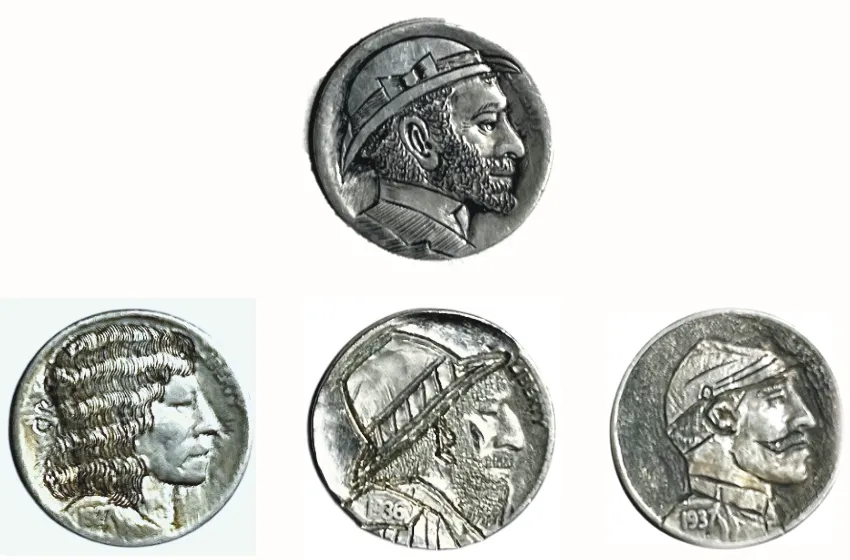HOBO Nickels – True Americana Folk Art
By: Fred De Vall

A true HOBO nickel starts with the Buffalo nickel as the “host” coin to use in carving an image usually on the obverse side of the coin. These coins were used because they had a large enough face and profile for the carvers to modify as they wished when carving their creations. Typically, these coins will show a hobo profile with a round derby style hat, hat brim, and facial
hair of some type. Many nickels will include restyled hair around the derby hat, facial hair including a beard and mustache. The field surrounding the hobo’s face can also show the neck area with a shirt collar of differing designs, as well as shoulder area. Each finished coin is unique as no two coins were carved and completed to be duplicates of another coin.
When did hobo nickels first appear?
Hobo nickels began appearing throughout the country about the same time that the Buffalo nickel was minted. Many 1913 coins were made into HOBO nickels using superb quality coins for carving. Hobo carvers made these coins to pass idle time away, or to sell their coins for a meal or additional money. Thousands of hobos carved, whittled, hammered, chiseled and punched
images onto the Indian profile as well as the buffalo on the coin’s reverse side. Of the thousands of hobos who made these nickels, there were probably no more than ten or twenty who were masters at their trade. As people found out that the quality of these coins dropped, they sought out only the best coins for purchase. Eventually many of the hobo carvers stopped carving and
found other means of survival.
Who were the best carvers?
Two of the best-known carvers to excel at their trade were Bertram Wiegand (Bert) and George Washington Hughes (Bo). Bert was much older than Bo, but took him under his wing, so to speak, and taught him the art of carving. Bert was a perfectionist and only the best finished coin was allowed to be sold. He instilled this in his teaching of carving to Bo, and as some of the literature about hobo coins states, Bert would only allow Bo to sell his best coins. These two men were life-long friends and traveled around the country together frequently. During their travels together, they developed a small network of dealers who purchased their hobo coins as well as furnishing Bert and Bo with additional coins to use for carving. Most of their travels focused on the Southern, Northeast, Midwest and Central parts of the United States. Traveling frequently on trains, they knew train schedules wherever they were, and used this means of travel consistently.
There are other known carvers during the early years of hobo nickel carving, who also excelled in carving high quality coins. They, too, had a customer following to sell their coins too, and made their living carving. Today, the coins by Bert, Bo and some of the other original carvers command high prices for their works.